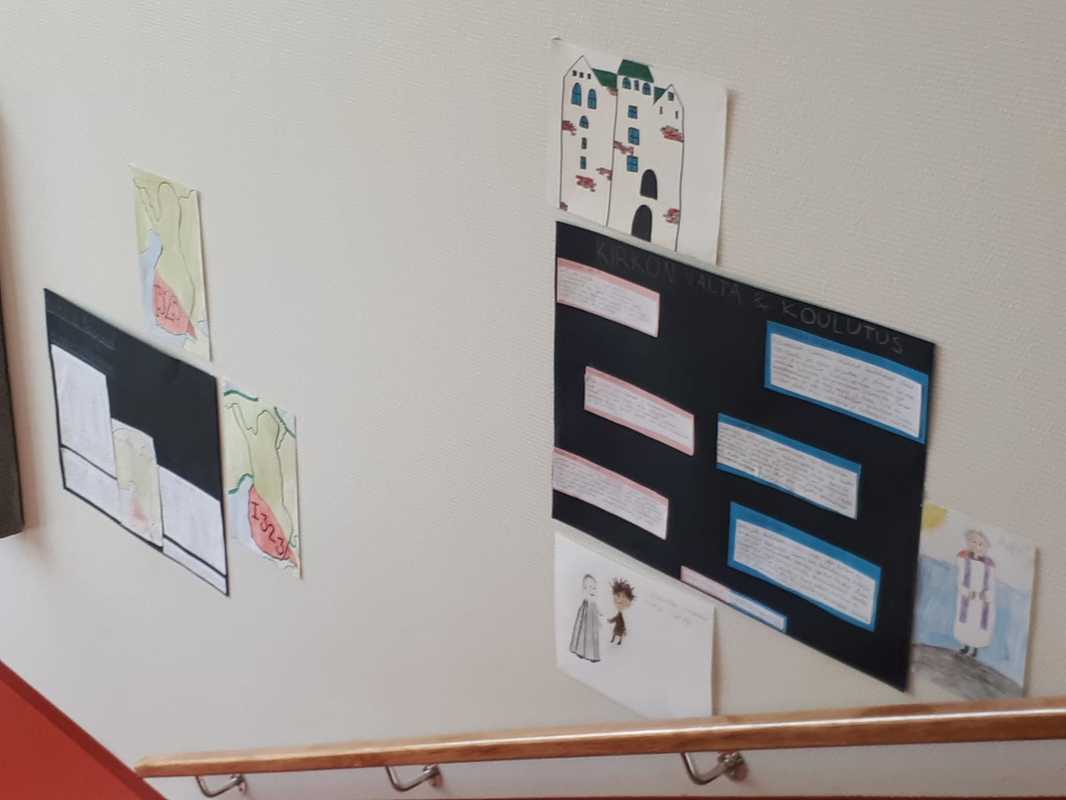Finnish Middle Age (Finnish interdisciplinary learning modules)
FINNISH INTERDISCIPLINARY LEARNING MODULES
FINNISH INTERDISCIPLINARY LEARNING MODULES
In Finlands` national curriculum (2016) it´s determined that every school should have at least one distinct theme, project or period that combines different disciplines. It is about examining a phenomenon at the same time from different disciplines. It is called interdisciplinary learning modules (in finnish monialainen oppiainekokonaisuus).
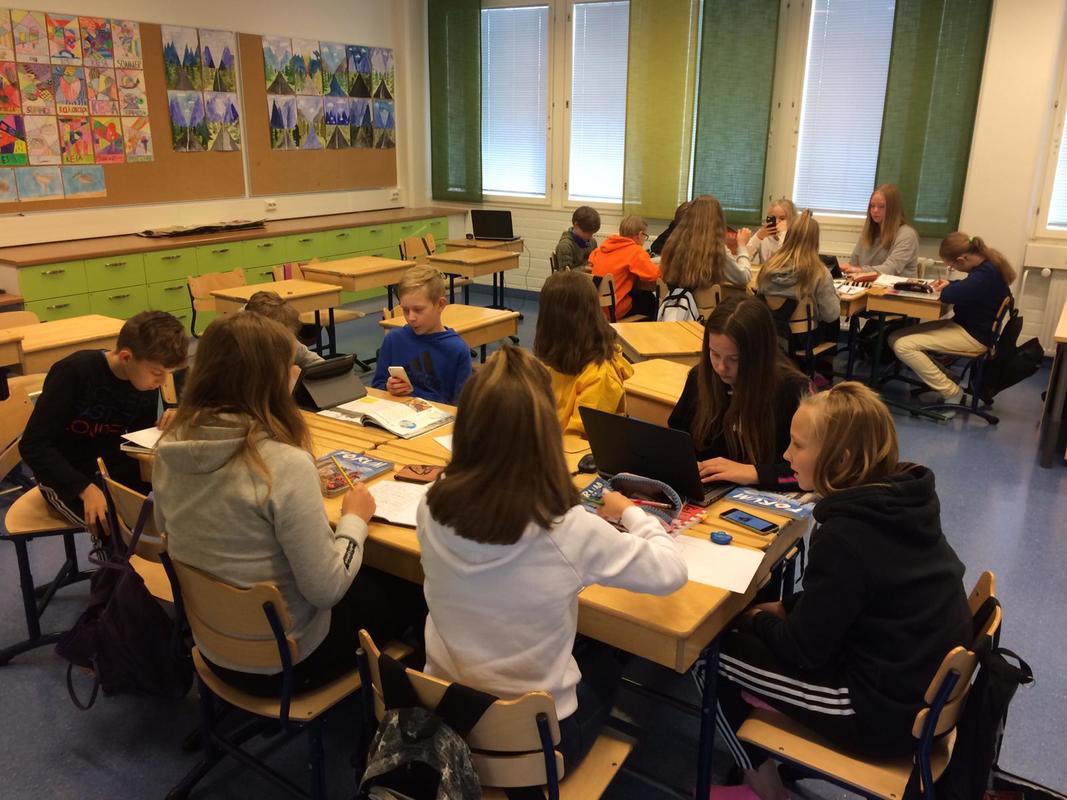
Students definined the given topic in their groups.
In our Kirkkomännikkö school this project combines at least three different disciplines and it`s working extent is about 25 hours. In the beginning of this module a subject matter, aims, contents and evaluation are specified. It is not only the teacher who decides these but it´s done together with the students.
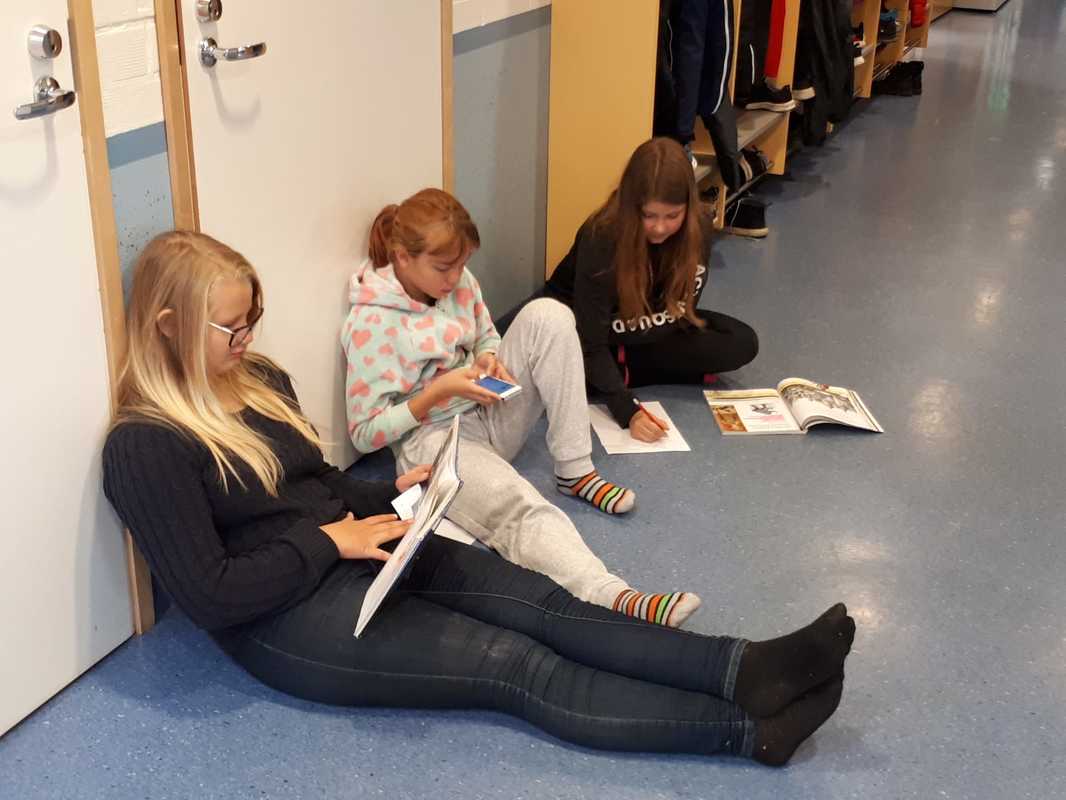
Working in small groups before gathering the information together as a whole group.
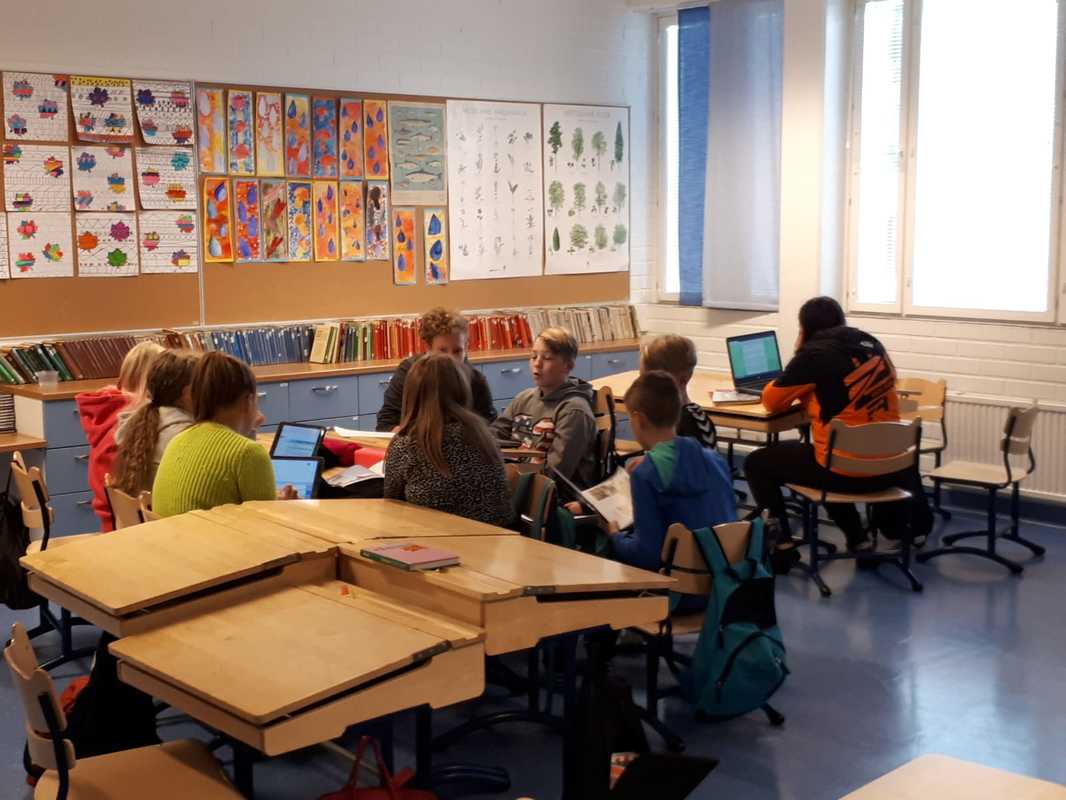
One of the groups preparing the final report.
The aims are:
- to develope students` collaboration skills
- to combine information that they gather from different disciplines
- analyzing the facts
- assimilate the information
- learning how to work long-term
This year 6th graders theme was: Middle Age in Finland (about 1200-1570). The topics were:
- Classes (nobilities, priesthood, burghers and farmers)
- Cities in Finnish Middle Age
- Living in a country side: smoke cabins (middle age house that had no chimney), subsistence economy, hunting/fishing/burn-clearing, gathering
- Church: crusades, churchbuildings, monasteries, the power of church, education (Lalli vs. Bishop Henrik)
- Treaty of Nöteborg 1323: Sweden vs. Novgorod
- Healthcare, hygiene, plague
- Marketing
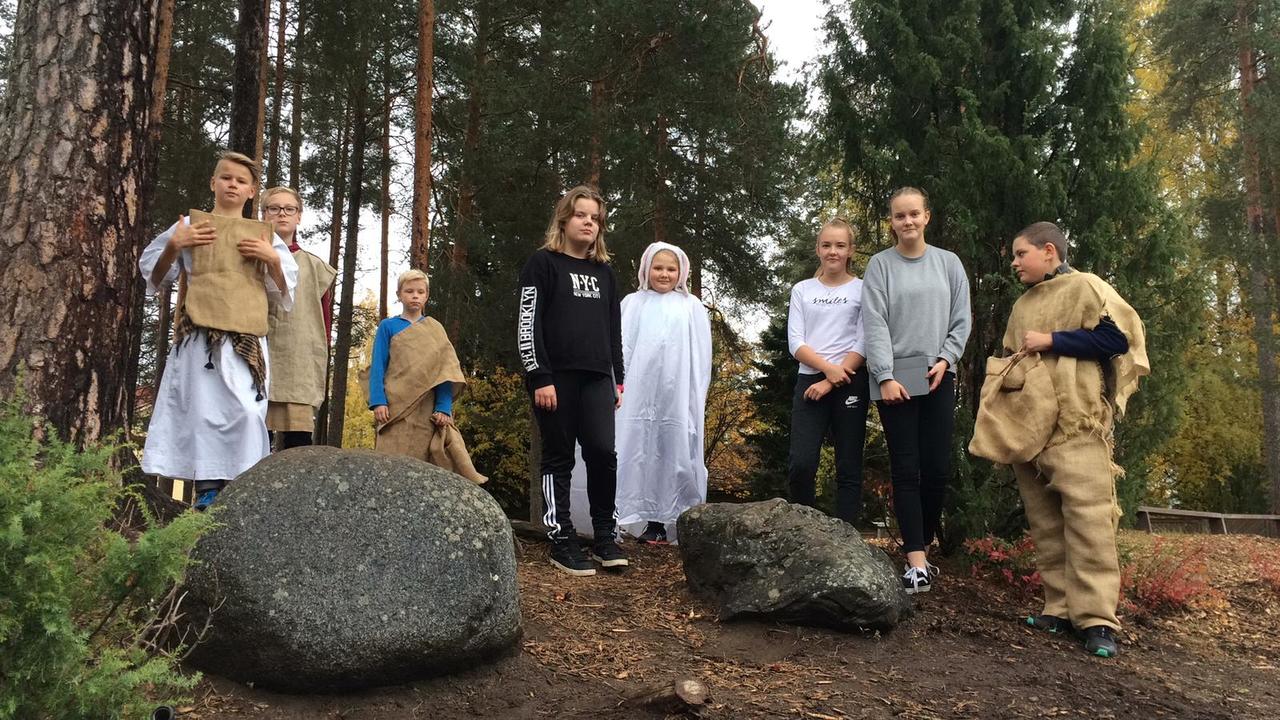
Students working on taking stillphotos for the project.
The disciplines in this project were:
- History
- Religion
- Finnish language
- Art
In the beginning of projects theme, goals, working methods, information retrieval, gathering the information and final reporting was planned and decided together. Students were divided to groups of 7-8 pupils. Each group got their own topic. In the beginning of the week they did the search for information for about 7-8 hours. The middle of the week was used to analyze the information, writing the transcript with computers, photographing, preparing the presentation and so on. Students introduced the information in Power points and drawings. About 2 hours were used to present the topics.
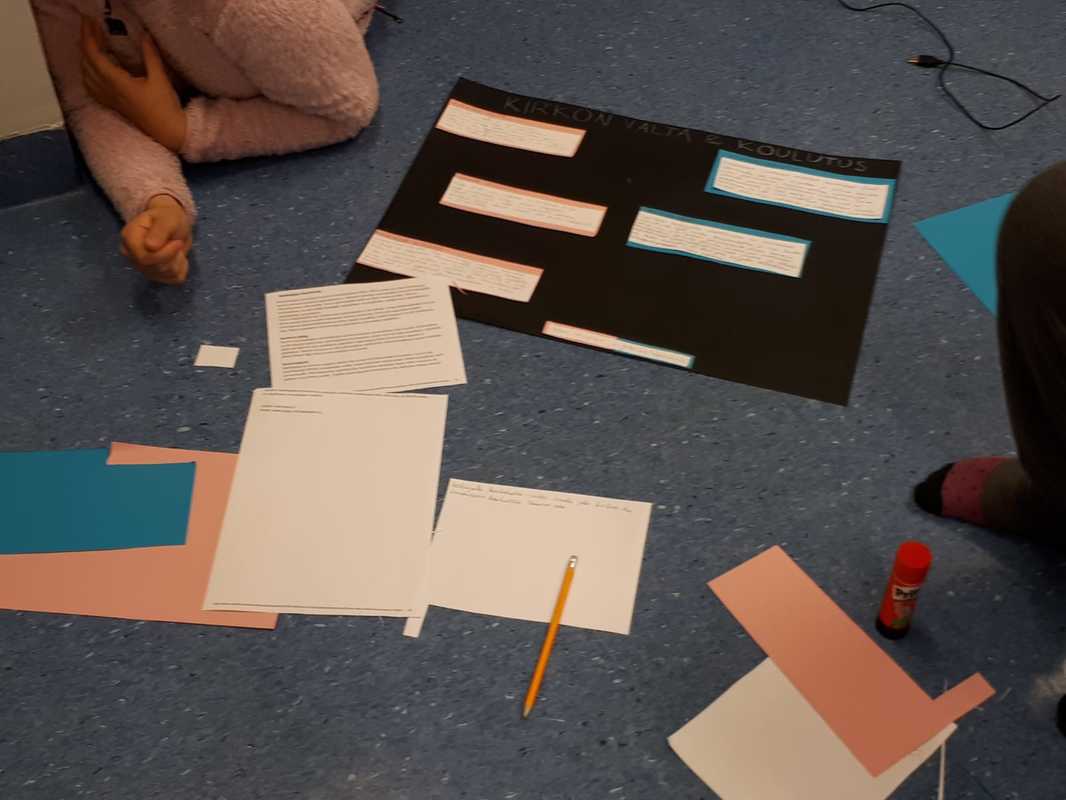
Final reporting presented on the school hall walls so that everyone can explore the subject.
Power point-shows were presented to the other groups in the school gymnasium one group at a time. The presentations had a storyline, which was executed as still-pictures and captions.In the end each student filled self-evaluation forms. In this form they assessed their own effort, groupwork and were reflecting how to improve their working.
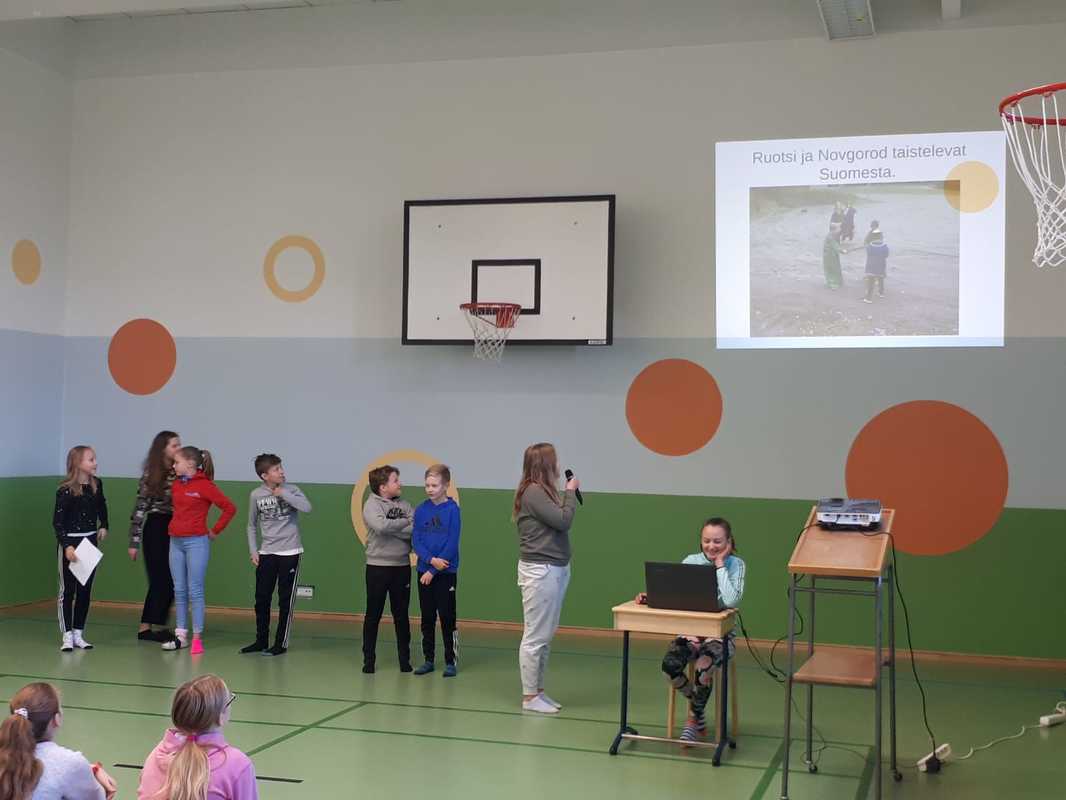
Groups presenting their work for other groups in schools gymnasium.
